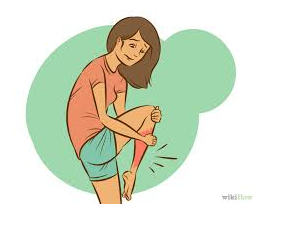Reduce Swelling in Your Legs
Sep 2, 2015

What is Edema?
Edema is a condition characterized by an excess of watery fluid collecting in the cavities or tissues of the body.
Normally the body maintains a balance of fluid in the tissues by ensuring that the same amount of water entering the body also leaves the body. The circulatory system transports fluid within the body via a network of blood vessels. This oxygen and nutrient rich fluid moves from the walls of the blood vessels into the body’s tissues. After the nutrients are used, the fluid moves back into the blood vessels. Edema is either too much fluid moving from the blood vessels into the tissues or not moving back into the blood vessels.
There are a few things you can do to reduce the swelling in your legs and even help prevent the swelling from happening.

Bananas contain high amounts of potassium, which helps eliminate fluid retention. Not a banana fan? A handful of raisins, spinach or dried apricots will also do the trick.
Natural diuretics, cabbage and spinach can be added to salads or sandwiches. Enjoy a side of coleslaw for lunch.
Another natural diuretic is cranberry juice (pure, not from concentrate). Vitamins A and C help to diminish the fragility of capillaries and decrease water retention.Do’s and Don’ts for Alleviating Edema
- DO lift your legs! Regularly walking, running, bicycling, and aerobic dancing can work wonders. If ankles swell while seated at work, try lifting your legs up parallel to the floor every few minutes. During breaks, walk around the office or up the stairs. Spend a portion of the lunch hour on your feet, exercising.
- DO keep your feet up. While resting, reading, or watching television, prop a pillow under those tootsies. A little help from gravity can go a long way in draining fluid from swollen limbs.
- DON’T Cross your legs. Doing so limits the blood flow through the thigh veins, in turn aggravating the swelling in the lower legs.
- DO toss out tight clothing. If you have to squeeze into your pants, you can be guaranteed that pressure is being placed on your upper thighs and waist, in turn restricting the removal of fluids from the lower legs.
- DO limit alcohol intake.
- DON'T smoke.
- DO stay away from junk food. Not only is it bad for you, but the excess salt tips the scales.
- DO eat 6 small meals a day, rather than 3 big ones you can split your DTG meals into two servings.
- DO apply an ice pack to help bring your legs back to normal size. Place ice cubes in a plastic bag with a zipper seal, wrap a light towel around the bag, and apply for five to ten minutes. A bag of frozen veggies also works well. In summertime, dip legs (ankle-deep) into a bath of ice water. If you have diabetes or poor circulation in your feet, skip the ice bath, unless directed to use it by your physician.
.jpg) Author: Kristen Ciuba
Author: Kristen Ciuba
Kristen is a Nutritionist at Diet-to-Go, based in Lorton, VA. She tries to “practice what she preaches” by fitting in healthy foods and cooking, challenging exercise, and quality time with family and friends every day!









